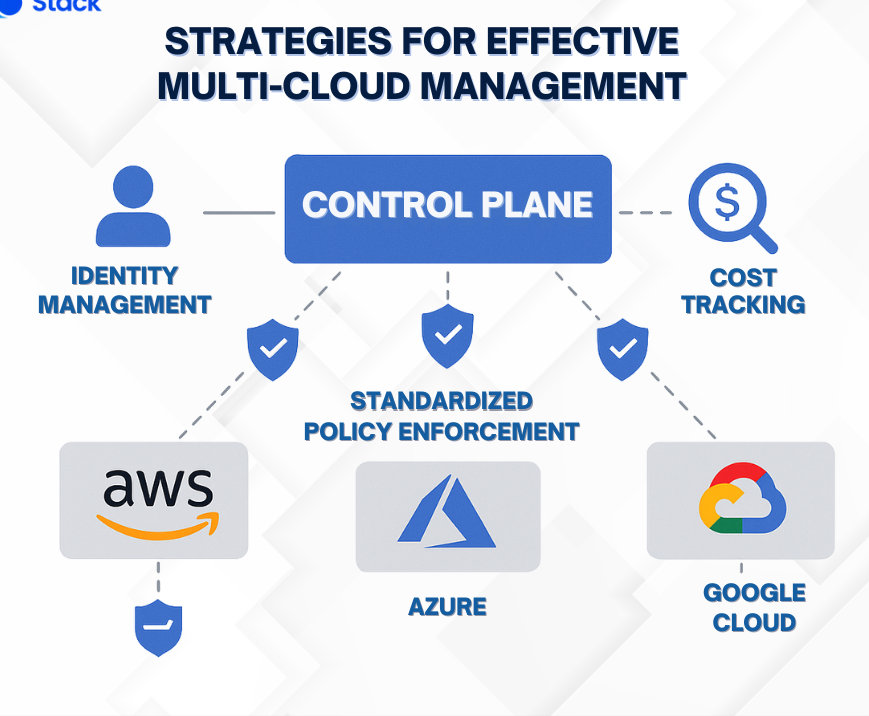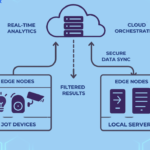As organizations grow and diversify, so do their cloud strategies. Increasingly, businesses are embracing multi-cloud architectures—leveraging services from multiple cloud providers such as AWS, Azure, and Google Cloud—to improve resilience, avoid vendor lock-in, and meet compliance or performance needs.
But while multi-cloud brings flexibility, it also introduces complexity. Managing distributed resources across multiple platforms requires thoughtful governance, orchestration, and tooling. In this blog, we’ll explore key strategies to streamline multi-cloud management, minimize risk, and maximize value.
Why Go Multi-Cloud?
Before diving into management strategies, it’s worth understanding why organizations adopt multi-cloud in the first place.
Key Drivers:
- Avoiding vendor lock-in by not relying entirely on one provider.
- Optimizing costs by selecting the most cost-effective services across clouds.
- Improving resilience with geographic and provider-level redundancy.
- Meeting compliance requirements in regulated industries or regions.
- Accessing best-of-breed services, such as AI from Google, compute from AWS, and enterprise integration from Azure.
However, these benefits come with challenges—particularly in security, operations, and visibility.
Top Challenges in Multi-Cloud Environments
- Inconsistent IAM models and security policies across providers.
- Lack of unified monitoring and observability.
- Different APIs, services, and management tools.
- Data gravity and inter-cloud latency.
- Governance gaps and compliance drift.
To succeed in multi-cloud, organizations need a strategy that prioritizes standardization, automation, and visibility.
Strategies for Effective Multi-Cloud Management
1. Standardize with Infrastructure as Code (IaC)
Use IaC tools like Terraform, Pulumi, or Crossplane to provision and manage infrastructure across cloud platforms. IaC ensures consistency, version control, and repeatability, regardless of the provider.
Example:
Use Terraform modules to define reusable templates for networking, compute, and storage resources, then deploy them across AWS and Azure with provider-specific configurations.
Tip: Keep your IaC modular and abstract common configurations to reduce duplication.
2. Unify Identity and Access Management
IAM is often a sticking point in multi-cloud setups. Implement centralized identity using SSO providers like Okta, Azure AD, or Google Workspace. Then federate access across cloud accounts using role mapping.
- Use SCIM and SAML/OIDC integrations for unified authentication.
- Apply least privilege policies in each cloud, and automate user provisioning/de-provisioning.
- Audit access centrally for compliance and governance.
Tools to explore: AWS IAM Identity Center, Azure AD Enterprise Apps, GCP IAM, and HashiCorp Vault.
3. Centralize Logging and Monitoring
Deploy a central observability layer that aggregates metrics, logs, and traces across providers.
- Use open-source tools like Prometheus, Grafana, Loki, and OpenTelemetry.
- Consider multi-cloud observability platforms like Datadog, Dynatrace, or New Relic for end-to-end visibility.
- Set up alerts and health checks that span regions and cloud boundaries.
Tip: Standardize log formats and tagging across platforms for easier correlation.
4. Automate Policy and Security Enforcement
Implement Policy as Code (PaC) to enforce security, cost, and compliance policies automatically.
- Use OPA (Open Policy Agent) to define cloud-agnostic rules.
- Enforce cloud guardrails with AWS Config, Azure Policy, or GCP Organization Policies.
- Validate IaC pre-deployment with tools like Checkov, tfsec, or CloudFormation Guard.
Bonus: Automate compliance checks in your CI/CD pipeline for continuous compliance.
5. Optimize Costs Across Clouds
Multi-cloud can quickly become multi-expensive. Track and optimize spending across platforms with cost visibility tools.
- Consolidate billing data using FinOps platforms like CloudHealth, Apptio Cloudability, or OpsPilot (with AWS Bill Auditor and Cost Estimator features).
- Use reserved instances and savings plans strategically across providers.
- Identify and clean up idle or underutilized resources.
Tip: Apply chargeback or showback models to promote accountability across teams.
6. Build Cloud-Agnostic Architectures (When It Makes Sense)
Design applications to be portable, using:
- Containers and Kubernetes for workload abstraction.
- Cloud-agnostic CI/CD pipelines using GitHub Actions, ArgoCD, or Spinnaker.
- Message brokers and databases with multi-cloud support (e.g., Kafka, MongoDB Atlas, CockroachDB).
Caution: Don’t abstract everything. Use native services where they offer significant advantages—just manage the risk with modular design and data portability.
7. Establish Multi-Cloud Governance Frameworks
Define governance structures that span clouds:
- Set naming, tagging, and labeling conventions across environments.
- Classify data and enforce regional controls.
- Establish risk management and compliance frameworks aligned to standards like ISO 27001, SOC 2, or NIST.
Use tools like ServiceNow, Cloud Custodian, or Cloud Governance as Code to enforce policies at scale.
Real-World Example: Global SaaS Provider with Multi-Cloud Footprint
A global SaaS company hosts its core services on AWS, runs analytics on Google Cloud, and uses Azure for enterprise integration.
Multi-cloud strategy highlights:
- Terraform manages infrastructure across all three clouds from a central Git repo.
- SSO via Okta controls access to all cloud accounts.
- Datadog provides a unified observability layer.
- CloudHealth + OpsPilot help track and optimize costs.
- OPA policies enforce tagging, encryption, and region usage.
The result: streamlined operations, improved resiliency, and better cost control across a highly distributed cloud environment.
Conclusion
Managing multi-cloud doesn’t have to mean managing chaos. With the right mix of automation, abstraction, and governance, organizations can harness the flexibility of multiple cloud providers without losing visibility or control.
The key is to treat multi-cloud as a strategic architecture—not a byproduct of vendor sprawl. From IaC and unified IAM to observability and policy enforcement, every layer should work toward seamless orchestration and secure scalability.



